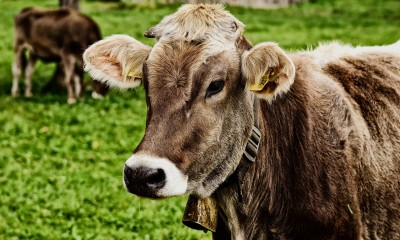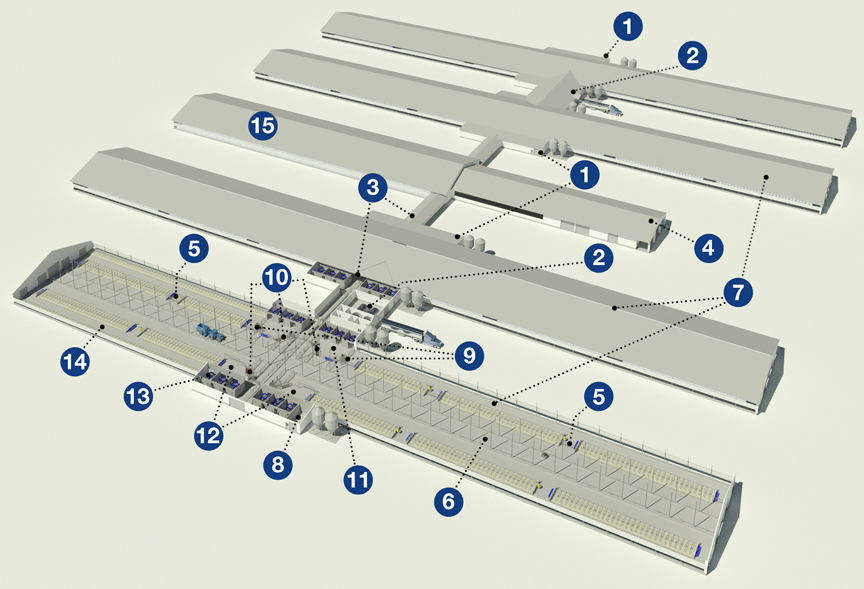Robotic Milking Could Be the Key to Your Dairy's Expansion by Rob Pol

Robotic Milking Could Be the Key to Your Dairy's Expansion by Rob Pol
Almost everyone is thinking about how to expand their business, or at least increase profitability one way or another, and for many dairy farmers with both large and small herds, robots are becoming the solution. Many dairies across North America originally built a milking center connected to a freestall housing facility and have since expanded the size and number of barns and increased the number of cows to the maximum capacity of the milking center. Now that the existing facility is maxed out, robots could be a great solution for continued expansion.
Why Add Robots?
Adding a new robotic facility to your existing dairy, whether it's on the same site or another site close by, could help reduce the pressure on the existing facility. Here's what robots could add to your dairy:
- Expand your dairy with robots and add more units as you desire.
- Reduce your up-front cost compared to a large rotary or line parlor facility designed for future herd size.
- Transition away from the current setup in a way that works for you.
- Address growing pains and prepare dairy management to succeed in a new frontier with a gradual transition.
Where to start?
There are countless considerations when converting to a robotic facility, including management style, nutrition options and many others, but cow comfort and cow flow during the construction process and once construction is completed needs to be a top priority.
In the example shown above, an existing 3,500-cow (plus or minus) facility has been converted into a robotic facility by adding lean-to structures and new, centralized milkhouse facilities. The four-row freestall barns with center feedlanes shown are the most common cow housing, but the six-row freestall also shown, as well as many other design options, can also be reconfigured to facilitate robotic milking. The following considerations were made when designing the robotic expansion of this dairy:
- Built robot rooms to the outside of each existing group of cows, allowing full access to the existing cow transfer lanes. The addition of the robots does not interfere with the existing manure-handling and ventilation systems.
- Added new milkhouses with surrounding equipment rooms, utility rooms and herd offices. The location is designed central to 24 robots to maximize efficiency for milk transport to the pick-up point and, more importantly, the ability to effectively clean the milk system.
- Created remote equipment rooms adjacent to robots where needed in order to accommodate hot water systems, vacuum equipment etc. as well as space for teat dips and cleaning chemicals.
Whether reducing labor, increasing production or just replacing aging equipment has you thinking about a robotic solution, remember to take careful consideration in the design of your facility. Even the best robotic equipment in the world will not be able to show its potential if the cows are not able to flow through it easily and comfortably.
- Lean-to addition with equipment room for robots
- New structure between existing barns with robot rooms, milk house, equipment, office etc.
- Existing transfer lanes to remain in place
- Existing milking center
- One-way gates can be added to convert cow flow from free-traffic to modified-guided cow flow
- Self-locking headgates can be added for handling cows at the feed table
- Typical four-row freestall barn
- Equipment room
- Pre-selection gate (guided traffic)
- Post-sort gate (guided or free traffic)
- Commitment pen in guided traffic
- Temporary fetch pen in free traffic
- Robots installed in lean-to addition with little interruption to daily routines during construction
- Typical six-row freestall barn
- Existing special-needs facility can continue being used
Upcoming Events
Crops, Cows & Critters - Southwest New York Dairy, Livestock & Field Crops Newsletter Sponsorship
December 19, 2025
Our two forms of publications feature research-based and timely information from our four specialists, listed to the right, along with local event notifications and Cornell University outreach. This information is provided to participants who range from dairy, livestock, and field crops producers to agricultural suppliers and consultants.
Weekly Email Update: Shared with 625+ households who have signed up with our program.
Monthly Paper Mailer: To reach our stakeholders and farmers who lack internet access, we send out a monthly mailer where your company's logo and contact information would be featured with a mailing list of 330+ households.
If you sponsor our weekly and monthly publications you reach approximately 955 households.
Visit our website to view our newsletters!
2025 Cornell Food Beverage & Animal Feed Manufacturer Survey
December 19, 2025
Industry and Educational Advocates for New York State's Food, Beverage, and Animal Feed Manufacturing industries:
As you know, NYS has a diverse food and beverage manufacturing industry, in both the types of industries that exist and the wide distribution of firms by scale. Many manufacturing firms have strong backward linkages to agricultural production sectors in the state that support both farm-level and downstream food industry firms and consumers. In collaboration with the New York State Department of Agriculture and Markets, a team from Cornell University's Charles H. Dyson School of Applied Economics and Management has recently rolled out the 2025 New York State Food, Beverage, and Animal Feed Manufacturer Survey. The industry will benefit from an updated assessment of the industry that informs private and public investments and opportunities to support firm growth and improved profitability.
Cornell Organic Field Crops & Dairy Conference
March 6, 2026
Waterloo, NY
Farmers, researchers, educators, and agricultural service providers from across the Northeast are invited to the 2026 Cornell Organic Field Crops & Dairy Conference, held Friday, March 6, 2026, from 8:00 a.m. to 4:30 p.m. at the Lux Hotel & Conference Center in Waterloo, N.Y.
Co-hosted by New York Soil Health and Cornell CALS, the annual conference brings together leaders in organic grain, dairy, and livestock systems to share practical tools, new research, and farmer-tested strategies to support resilient and profitable organic production.
Announcements
No announcements at this time.






